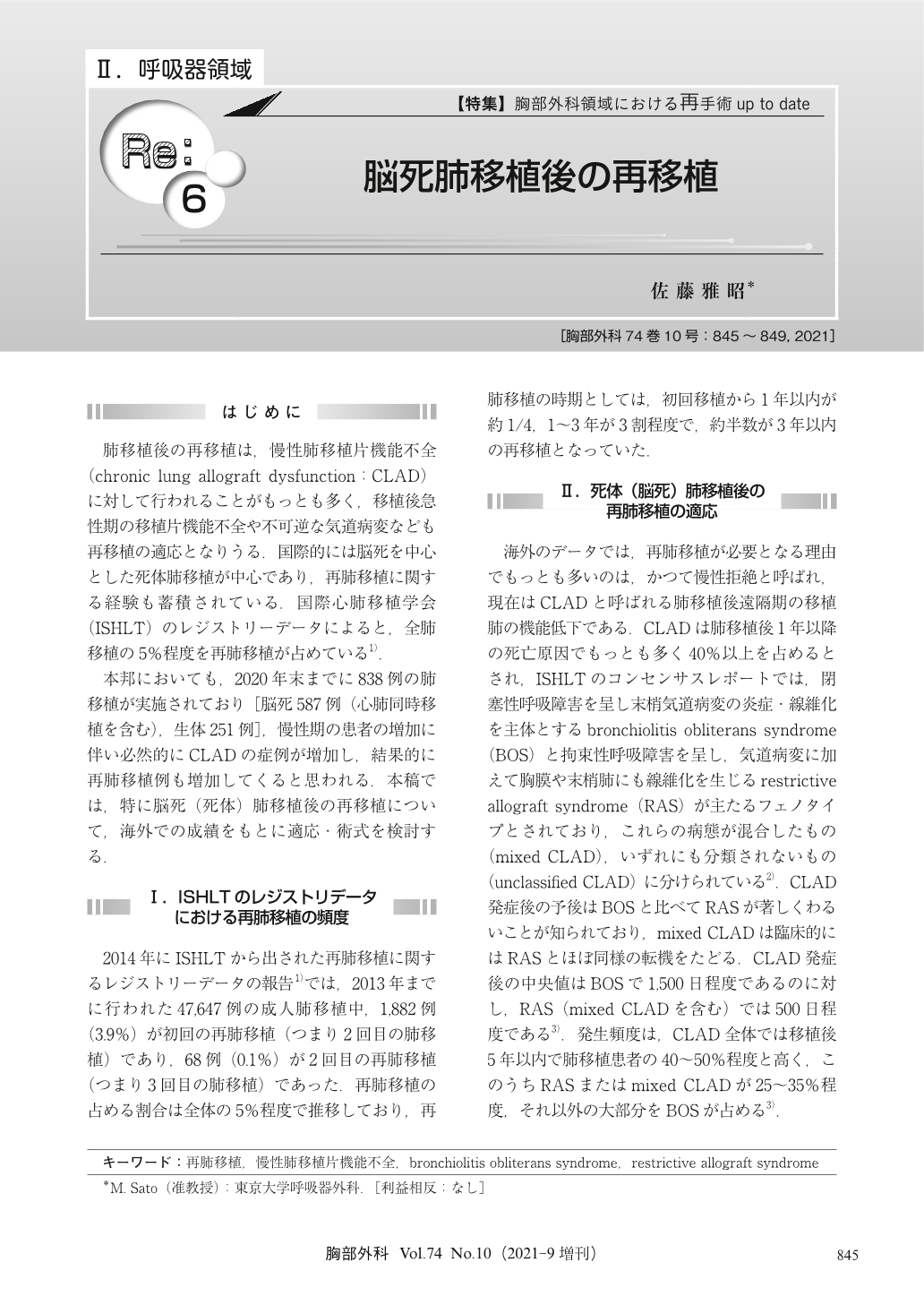Japanese
English
- 有料閲覧
- Abstract 文献概要
- 1ページ目 Look Inside
- 参考文献 Reference
肺移植後の再移植は,慢性肺移植片機能不全(chronic lung allograft dysfunction:CLAD)に対して行われることがもっとも多く,移植後急性期の移植片機能不全や不可逆な気道病変なども再移植の適応となりうる.国際的には脳死を中心とした死体肺移植が中心であり,再肺移植に関する経験も蓄積されている.国際心肺移植学会(ISHLT)のレジストリーデータによると,全肺移植の5%程度を再肺移植が占めている1).
As the number of lung transplantation is increasing in Japan, retransplantation is also expected to increase, especially for chronic lung allograft dysfunction (CLAD). According to international experience on lung retransplantation, the short and long-term outcomes of retransplantation is inferior to the initial lung transplantation. Thus, indication and surgical options of retransplantation should be carefully and objectively examined. Especially, patients with recognized poor prognostic factors for retransplantation should be carefully evaluated. Such factors include indications other than CLAD, restrictive allograft syndrome (RAS), and a case with short time period since the first transplantation. In addition, those with relatively old age, declined renal function, and immunological sensitization (especially formation of antibodies against human leukocyte antigen) should also be carefully evaluated. Medication adherence is one of the most important parts of assessment for retransplantation. Surgically, lung retransplantation ipsilateral to the initial transplantation needs careful dissection of hilar structures. In addition, special caution is needed for cases expected to have severe pleural adhesion including those with RAS.

© Nankodo Co., Ltd., 2021


